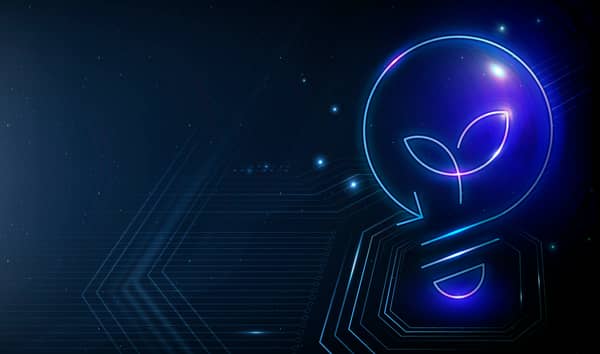
The Impact of Artificial Intelligence on Energy Saving in Telecoms
2024-07-09
Within this framework, we are collaborating with Surexport, a multinational company dedicated to the production, management, and distribution of red fruits, on a project that implements Tupl AI Agro Unifier solution to automate crop yield estimation processes through yield curves using advanced data analytics tools and artificial intelligence applications. Additionally, we are in the process of developing a project to automate farm treatment processes.
Surexport, as a leading company in its sector, is aware that automation is a requirement to maintain its market leadership. They already use IoT devices and measurement tools and want to harness the data generated by their machines to boost productivity, reduce costs, and improve efficiency. Tupl, on the other hand, applies Artificial Intelligence and Machine Learning to create tools that optimize industrial and agricultural processes.
This large-scale producer of red fruits faces daily challenges in its production facilities, including:
Tupl AI Agro Unifier is an artificial intelligence and machine learning-based system that automates complex processes that have traditionally been done manually, streamlining decision-making. In these two use cases, we describe how AI Agro Unifier is helping Surexport address the challenges it faces:
Surexport Use Case 1 - Automation of Yield Curves
This use case, already implemented and operational, automates the crop yield forecasting process through yield curves. Three types of curves are used:
All this information is necessary for the sales team to know how many goods they will have available for sale, and thus, is the basis for calculating profits for the company. Tupl AI Agro Unifier connects to existing monitoring systems and automates data reporting, sending alerts if real data deviates from the forecast. Additionally, the system compares the estimate with actual harvesting data and generates alerts that allow the technician to recalculate the curve and then provide more reliable data to the sales team. Tupl AI Agro Unifier has automated this entire process, adding new data fields, such as daily estimates instead of weekly ones, and sending alerts when there is a deviation from the harvesting estimations. Furthermore, the user interface of Tupl AI Agro Unifier allows for much more agile and automated data entry.
Image 2: Work Orders. Monitoring of the status of phytosanitary treatment orders.

Image 1: Yield Curves. Analysis-Prediction of farm-level production yield for commercial forecasting and sales volume increase.
Use Case 2 (under development) - Automation of Treatment Orders
Phytosanitary treatment orders are one of the most complex processes in agricultural management due to the amount of data required for their management. This process involves multiple departments (technicians, administrators, farm managers) and external suppliers. Additionally, treatments must be justifiable to the relevant agricultural authorities, and treatment products must be officially approved by the Ministry of Agriculture, increasing the complexity of the process and the importance of controlled execution. Currently, this process is manual, making traceability and communication of information to authorities difficult.
Tupl is working with Surexport to develop a pilot for automating this process, from the technician’s initial sampling to treatment execution.
The automation process we are working on begins with the sampling the technician decides to perform. This process is identified with a unique code for traceability. After sampling, the technician initiates the treatment order, which is linked to a farm, a crop, and a species, and must contain precise information about which plots of land to treat, with which product, and how much product is needed. The solution in development provides a map of the farm showing the different plots. With this information, the technician generates the treatment order in the system through a very simple user interface. Tupl AI Agro Unifier connects the generated order to product warehouses, so it can immediately determine if the product is available or not, without having to contact the warehouse each time. If it's available, it can be reserved through the same system; if not, a purchase order can be initiated, or if it's available in another warehouse, a product movement order can be issued. In this way, Tupl AI Agro Unifier incorporates product stock management for treatment orders generated in the system.
Once this initial phase of the process is completed, the system will automatically send all the information about the order that needs to be executed to the farm manager. The execution will be assigned to a specific person and piece of machinery, also identified with a code for later traceability. After completing the treatment, they can enter all treatment information, including any incidents, through the mobile user interface of the platform. This records everything that has been executed or not, start and end times for execution, etc., and any incidents are automatically notified to the technician through alarms, ensuring that all treatments are completed within the allocated budget and that safety deadlines for harvesting are met.
Additionally, all data remains in the system, making it easily accessible in a dashboard and providing access to historical data at any time. This is crucial for streamlining the automatic completion of the field notebook, which will be mandatory next year and is a manual process that is labor-intensive and prone to errors.
As explained, Tupl AI Agro Unifier generates real-time alerts throughout the process to maintain control, notifying immediately if there is a deviation from the procedure or a discrepancy with forecasts. This not only allows for real-time corrections but also reduces execution time and human errors and, above all, controls and reduces costs, as the system immediately alerts if there is a deviation from forecasts compared to reality - for example, if more product is used than indicated. If this streamlining is multiplied by the number of hectares that a large company like Surexport usually has, significant cost savings can be expected.
